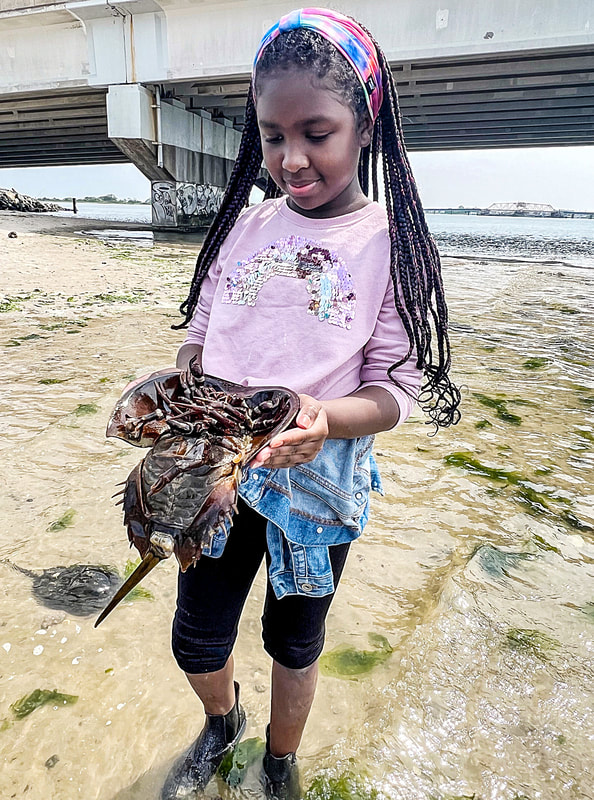|
During the last few weeks, horseshoe crabs have been coming ashore in Jamaica Bay to lay eggs at the high tide area – in much the same way as they have for over 300 million years (give or take a few million millennium or two). To greet them, the American Littoral Society and its partners (the Jamaica Bay-Rockway Parks Conservancy, NYC Audubon, and the National Park Service) organized a festival to recognize this annual rite of spring. The Jamaica Bay Horseshoe Crab Festival is an annual event to celebrate of the horseshoe crab, the ancient rite of spring that sees them emerge from bays and estuaries to spawn, and the importance of these creatures to the ecosystem. The festival, in it's 7th year, provides a unique opportunity for visitors to observe and learn about the species in its natural habitat under the guidance of trained experts. This event also serves as an important reminder of our responsibility towards protecting this species and the vulnerable coastal ecosystems they need in order to survive. More than 100 people came out on Sunday, May 21. Many attendees brought their children, who were in awe of these ‘living’ fossils (the ‘crabs’ have existed, largely unchanged, since before the dinosaurs emerged on earth). Also, horseshoe crabs are not really crabs but more closely related to arachnids (spiders and scorpions). These scary-looking but harmless animals are a very important part of the ecology of the bay as the billions of eggs they lay around the shorelines provide food for fish and other marine life as well as thousands of shorebirds that are migrating through the city this time of year. One bird in particular, the endangered Red Knot, flies non-stop from Brazil each spring to reach its nesting grounds in the northern tundra. Jamaica Bay (and especially much larger Delaware Bay) are important stopover sites for them to ‘refuel’ on the eggs and regain the body fat needed to continue the long journey north. The horseshoe crab is also used in medicine, as its copper-based bluish blood contains an element that clots when exposed to minute traces of bacteria. This is refined in the lab and used to test the purity of vaccines and blood transfusions. A synthetic alternative to horseshoe crab blood does exist and multiple studies have determined it to be safe and effective. This alternative is already used in about 60 countries, as well as the European Union. The Littoral Society advocates for the use of this synthetic alternative to reduce the impacts of biomedical harvesting on the crab population.
Pamela Olsen
7/2/2023 02:42:39 pm
Just wanted to verify that holding the horseshoe crab upside down is the correct way? Haven't seen that before. I am aware to never hold them by their tail.
American Littoral Society
7/5/2023 12:17:29 pm
It doesn't hurt the crab to be held upside down for a limited period of time. Our horseshoe crab experts typically do that while explaining crab anatomy. Holding one by the tail should never be done because the tail is what crabs use to turn themselves right side up when they get flipped by a wave. The only other guideline is to not keep them out of the water for an extended period of time. While they can remain out of water for quite some time while spawning, we try not to stress them more than necessary when we're showing people their remarkable anatomy.
Pamela Olsen
7/5/2023 12:38:36 pm
Thank you for clarifying that for me. A day is never wasted when animal advocates can learn something new. Comments are closed.
|
Archives
July 2024
Categories
All
|


